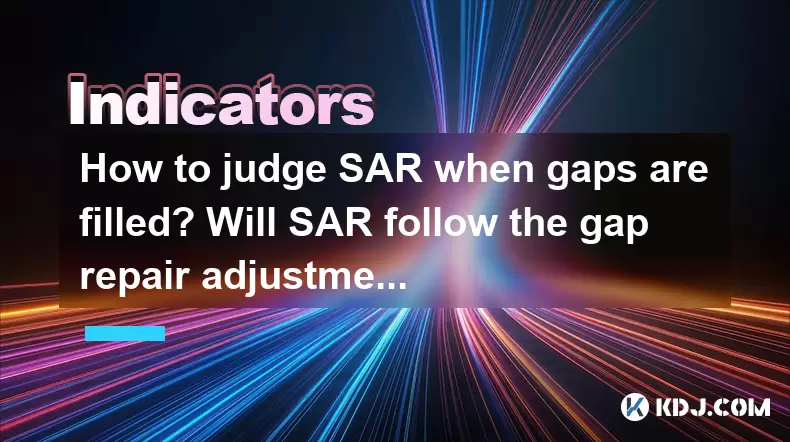-
 Bitcoin
Bitcoin $118000
-2.69% -
 Ethereum
Ethereum $4617
-0.94% -
 XRP
XRP $3.100
-4.95% -
 Tether USDt
Tether USDt $1.000
0.02% -
 BNB
BNB $847.9
0.68% -
 Solana
Solana $195.4
-1.22% -
 USDC
USDC $0.9997
-0.01% -
 TRON
TRON $0.3628
1.01% -
 Dogecoin
Dogecoin $0.2261
-6.42% -
 Cardano
Cardano $0.9229
5.88% -
 Chainlink
Chainlink $22.81
-2.94% -
 Hyperliquid
Hyperliquid $44.85
-1.20% -
 Sui
Sui $3.822
-3.14% -
 Stellar
Stellar $0.4239
-5.48% -
 Bitcoin Cash
Bitcoin Cash $591.3
-4.70% -
 Ethena USDe
Ethena USDe $1.001
-0.02% -
 Hedera
Hedera $0.2523
-3.94% -
 Avalanche
Avalanche $23.94
-4.27% -
 Litecoin
Litecoin $122.9
-5.68% -
 Toncoin
Toncoin $3.421
-1.11% -
 UNUS SED LEO
UNUS SED LEO $9.264
0.24% -
 Shiba Inu
Shiba Inu $0.00001303
-5.26% -
 Uniswap
Uniswap $11.01
-7.86% -
 Polkadot
Polkadot $4.038
-4.21% -
 OKB
OKB $99.10
5.46% -
 Dai
Dai $0.9998
0.00% -
 Bitget Token
Bitget Token $4.600
-2.32% -
 Cronos
Cronos $0.1534
-7.90% -
 Ethena
Ethena $0.7414
-4.15% -
 Aave
Aave $315.3
-2.45%
How to judge SAR when gaps are filled? Will SAR follow the gap repair adjustment?
The Parabolic SAR indicator adjusts gradually to gap fillings in crypto markets, using an acceleration factor to reflect new price extremes.
May 22, 2025 at 05:56 pm

Understanding how to judge the Stop and Reverse (SAR) indicator when gaps are filled in the cryptocurrency market is crucial for traders who rely on technical analysis. The SAR indicator, also known as the Parabolic SAR, is a popular tool used to determine potential reversals in the price direction of an asset. When gaps occur in the price chart, it can lead to confusion about how the SAR should behave and whether it will adjust to the gap repair. This article will delve into the mechanics of the SAR indicator, how it reacts to gap fillings, and whether it follows the gap repair adjustment.
What is the Parabolic SAR Indicator?
The Parabolic SAR is a technical analysis tool developed by J. Welles Wilder Jr. It is designed to provide entry and exit points for trades. The indicator appears as a series of dots placed either above or below the price bars on a chart. When the dots are below the price, it suggests a bullish trend, indicating that it might be a good time to buy. Conversely, when the dots are above the price, it suggests a bearish trend, indicating a potential time to sell or short.
How Does the Parabolic SAR Work?
The Parabolic SAR calculates its position based on the price movement of the asset. It uses an acceleration factor, which increases as the trend continues, causing the dots to move closer to the price. The formula for the SAR is as follows:
[ \text{SAR}{\text{today}} = \text{SAR}{\text{yesterday}} + \text{AF} \times (\text{EP} - \text{SAR}_{\text{yesterday}}) ]
Where:
- SAR is the Stop and Reverse value.
- AF is the acceleration factor, starting at 0.02 and increasing by 0.02 each time a new extreme point (EP) is established, up to a maximum of 0.20.
- EP is the highest high or lowest low of the current trend.
What are Gaps in Cryptocurrency Markets?
Gaps in the cryptocurrency market occur when there is a significant difference between the closing price of one period and the opening price of the next period. These gaps can be caused by various factors, including news events, market sentiment shifts, or liquidity issues. There are three main types of gaps:
- Breakaway Gaps: These occur at the beginning of a trend and signal a strong move in the direction of the trend.
- Runaway Gaps: These happen during the middle of a trend and indicate continued momentum.
- Exhaustion Gaps: These appear near the end of a trend and suggest that the trend is about to reverse.
How Does the Parabolic SAR React to Gaps?
When a gap occurs in the price chart, the Parabolic SAR does not immediately adjust to the gap. Instead, it continues to plot based on the previous price data until a new extreme point is established. This means that if a gap occurs and the price jumps significantly, the SAR dots will remain at their last calculated position until the next period's price data is available.
For example, if the price of a cryptocurrency closes at $100 and opens the next day at $120, creating a gap, the SAR dots will not jump to $120. They will continue to be calculated based on the $100 closing price until a new high or low is established.
Will the SAR Follow the Gap Repair Adjustment?
The Parabolic SAR will follow the gap repair adjustment once a new extreme point is established. If the price moves to fill the gap, the SAR will adjust its position based on the new price data. However, the adjustment will be gradual and based on the acceleration factor.
Let's consider a scenario where a gap occurs, and the price eventually fills the gap:
- Initial Gap: The price closes at $100 and opens at $120 the next day.
- Price Movement: The price gradually moves back to $100, filling the gap.
- SAR Adjustment: The SAR dots will continue to be calculated based on the $100 closing price until the price moves to establish a new extreme point. Once the price reaches $120 and then moves back towards $100, the SAR will adjust its position, but it will do so gradually, based on the acceleration factor.
Practical Example of SAR and Gap Filling
To better understand how the Parabolic SAR reacts to gap fillings, let's look at a practical example using a hypothetical cryptocurrency chart:
- Day 1: The price closes at $100, and the SAR dot is at $98.
- Day 2: The price opens at $120, creating a gap. The SAR dot remains at $98 because it does not adjust immediately to the gap.
- Day 3: The price moves to $115. The SAR dot is still calculated based on the $100 closing price from Day 1 and the $98 SAR from Day 1.
- Day 4: The price continues to move down to $110. The SAR dot starts to adjust but is still based on the previous data.
- Day 5: The price reaches $105. The SAR dot continues to adjust gradually.
- Day 6: The price finally fills the gap and reaches $100. The SAR dot adjusts to reflect the new extreme point established at $120 and then the subsequent movement back to $100.
In this example, the SAR follows the gap repair adjustment but does so gradually, based on the acceleration factor and the new extreme points established as the price moves.
Using the Parabolic SAR with Gap Analysis
To effectively use the Parabolic SAR in conjunction with gap analysis, traders should:
- Monitor the Price Movement: Keep a close eye on the price movement after a gap occurs. If the price starts to fill the gap, the SAR will eventually adjust.
- Understand the Acceleration Factor: Remember that the SAR adjusts based on the acceleration factor, which means the adjustment will be gradual.
- Combine with Other Indicators: Use other technical indicators, such as moving averages or RSI, to confirm the trend and potential reversal points.
- Set Realistic Expectations: Understand that the SAR may not immediately reflect the gap but will adjust as the price establishes new extreme points.
Frequently Asked Questions
Q1: Can the Parabolic SAR be used effectively in highly volatile cryptocurrency markets?
Yes, the Parabolic SAR can be used in volatile markets, but traders should be aware that the indicator may generate more false signals due to rapid price changes. Combining the SAR with other indicators can help filter out these false signals.
Q2: How does the Parabolic SAR handle sudden price spikes in cryptocurrencies?
The Parabolic SAR does not immediately adjust to sudden price spikes. It will continue to plot based on the previous price data until a new extreme point is established, which means it may lag behind significant price movements.
Q3: Is it possible to adjust the acceleration factor of the Parabolic SAR to better suit cryptocurrency trading?
Yes, traders can adjust the acceleration factor of the Parabolic SAR to make it more or less sensitive to price movements. A higher acceleration factor will cause the SAR to adjust more quickly, while a lower factor will make it adjust more slowly. However, finding the right balance can be challenging and may require experimentation.
Q4: How can traders use the Parabolic SAR to manage their risk in cryptocurrency trading?
Traders can use the Parabolic SAR to set stop-loss orders. For example, if the SAR dots are below the price, indicating a bullish trend, traders can set their stop-loss just below the SAR dots. Conversely, if the SAR dots are above the price, indicating a bearish trend, traders can set their stop-loss just above the SAR dots. This helps manage risk by providing clear exit points.
Disclaimer:info@kdj.com
The information provided is not trading advice. kdj.com does not assume any responsibility for any investments made based on the information provided in this article. Cryptocurrencies are highly volatile and it is highly recommended that you invest with caution after thorough research!
If you believe that the content used on this website infringes your copyright, please contact us immediately (info@kdj.com) and we will delete it promptly.
- Kazakhstan's Crypto Leap: Bitcoin ETF and Central Asia's Digital Finance Future
- 2025-08-13 12:45:19
- BlockDAG Presale Blazes Past $371M: Fundraising Frenzy Fuels Crypto Sensation
- 2025-08-13 13:05:21
- Meme Coins: Chasing the 2025 Surge – Which Will Moonshot?
- 2025-08-13 10:25:23
- Bitcoin's Wild Ride: Rally, Pullback, and What's Next
- 2025-08-13 10:25:23
- Bitcoin, Bitmax, and Institutional Demand: A New Era of Crypto Investment
- 2025-08-13 10:45:12
- Solana, ROAM, and Airdrops: What's the Buzz in 2025?
- 2025-08-13 11:35:13
Related knowledge

What does it mean when the +DI and -DI cross frequently in the DMI indicator but the ADX is flattening?
Aug 11,2025 at 03:15am
Understanding the DMI Indicator ComponentsThe Directional Movement Index (DMI) is a technical analysis tool composed of three lines: the +DI (Positive...

What does the sudden appearance of a "dark cloud cover" candlestick pattern during an uptrend indicate?
Aug 13,2025 at 11:35am
Understanding the 'Dark Cloud Cover' Candlestick PatternThe dark cloud cover is a bearish reversal pattern in technical analysis that typically appear...

What does it mean when the moving average, MACD, and RSI all send buy signals simultaneously?
Aug 11,2025 at 01:42pm
Understanding the Convergence of Technical IndicatorsWhen the moving average, MACD, and RSI all generate buy signals at the same time, traders interpr...

What does it mean when both the KDJ indicator and the RSI show overbought signals simultaneously?
Aug 13,2025 at 11:35am
Understanding the KDJ Indicator in Cryptocurrency TradingThe KDJ indicator is a momentum oscillator derived from the Stochastic Oscillator, widely use...

What does it mean when the price is trading above the SAR indicator but the red dots are densely packed?
Aug 09,2025 at 11:49pm
Understanding the SAR Indicator and Its Visual SignalsThe SAR (Parabolic Stop and Reverse) indicator is a technical analysis tool used primarily to de...

What does it mean when the candlestick chart forms a "Morning Star" but trading volume is sluggish?
Aug 12,2025 at 06:28pm
Understanding the Morning Star Candlestick PatternThe Morning Star is a three-candle bullish reversal pattern commonly observed in cryptocurrency pric...

What does it mean when the +DI and -DI cross frequently in the DMI indicator but the ADX is flattening?
Aug 11,2025 at 03:15am
Understanding the DMI Indicator ComponentsThe Directional Movement Index (DMI) is a technical analysis tool composed of three lines: the +DI (Positive...

What does the sudden appearance of a "dark cloud cover" candlestick pattern during an uptrend indicate?
Aug 13,2025 at 11:35am
Understanding the 'Dark Cloud Cover' Candlestick PatternThe dark cloud cover is a bearish reversal pattern in technical analysis that typically appear...

What does it mean when the moving average, MACD, and RSI all send buy signals simultaneously?
Aug 11,2025 at 01:42pm
Understanding the Convergence of Technical IndicatorsWhen the moving average, MACD, and RSI all generate buy signals at the same time, traders interpr...

What does it mean when both the KDJ indicator and the RSI show overbought signals simultaneously?
Aug 13,2025 at 11:35am
Understanding the KDJ Indicator in Cryptocurrency TradingThe KDJ indicator is a momentum oscillator derived from the Stochastic Oscillator, widely use...

What does it mean when the price is trading above the SAR indicator but the red dots are densely packed?
Aug 09,2025 at 11:49pm
Understanding the SAR Indicator and Its Visual SignalsThe SAR (Parabolic Stop and Reverse) indicator is a technical analysis tool used primarily to de...

What does it mean when the candlestick chart forms a "Morning Star" but trading volume is sluggish?
Aug 12,2025 at 06:28pm
Understanding the Morning Star Candlestick PatternThe Morning Star is a three-candle bullish reversal pattern commonly observed in cryptocurrency pric...
See all articles

























































































